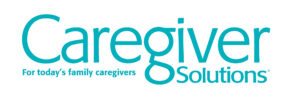 Urinary incontinence (UI) means losing urine when you don’t want to—an involuntary loss or leakage of urine. According to the World Health Organization (WHO), urinary incontinence is a widespread global disease and one of the last medical taboos for many people. UI affects around one in three women worldwide.
Urinary incontinence (UI) means losing urine when you don’t want to—an involuntary loss or leakage of urine. According to the World Health Organization (WHO), urinary incontinence is a widespread global disease and one of the last medical taboos for many people. UI affects around one in three women worldwide.
What is “urge” urinary incontinence?
Urge urinary incontinence is accidental leakage of urine accompanied by or immediately preceded by urgency.
What is “mixed” urinary incontinence?
Mixed urinary incontinence is accidental leakage of urine associated with urgency and also with activities such as sneezing, coughing, laughing, lifting or exercise.
How common is urinary incontinence?
As many as 3.3 million Canadians—nearly 10% of the population—experience some form of urinary incontinence. Unfortunately, very few people talk to their doctor about their symptoms. According to the Canadian Urinary Bladder Survey, 16% of men and 33% of women over the age of 40 have symptoms of urinary incontinence but only 26% have discussed it with their doctor.
Isn’t incontinence just a normal part of aging?
No! The changes that occur as we get older (like menopause in women or prostate enlargement in men) may contribute to incontinence, but that doesn’t mean you just have to live with it. Almost all cases of urinary incontinence can be treated, managed or cured.
What’s the difference between urinary
incontinence and overactive bladder? An overactive bladder (OAB) means you feel an urgent desire to go to the bathroom very frequently, whereas incontinence is leaking urine involuntarily. Sometimes, the two conditions go together. About half of people with OAB also have urge urinary incontinence, but you can have OAB without incontinence.
What is “stress” urinary incontinence?
Stress urinary incontinence (SUI) is defined as accidental leakage of urine during physical activities such as sneezing, coughing, laughing, lifting or exercising. Primary causes of SUI are events that directly damage pelvic floor muscles such as:
- Childbirth and pregnancy
- Pelvic / abdominal surgery
- Radiation therapy
What is the prevalence and impact of SUI on women?
- SUI, the most common type of UI in women, affects one in seven women worldwide
- Nearly half of the women with urinary incontinence suffer from the symptoms of stress urinary incontinence (49%). Urge incontinence accounts for 22% of all incontinence and mixed incontinence accounts for 29% of all incontinence
- SUI is more prevalent than other types of UI in younger and middle-aged women under 55 years
- Despite the high prevalence of SUI, many women are reluctant to discuss their condition with their partners, friends or even with healthcare professionals. Shame and embarrassment are the key deterrents of seeking help. In fact, more than half of women with SUI do not seek help from a healthcare professional
- SUI can have a profound impact on women’s quality of life as the condition can result in embarrassment, psychological distress, social isolation and loneliness
What factors increase a woman’s risk of developing SUI, or make the condition worse?
- Genetic factors, gender, neurological and muscular abnormalities
- Lifestyle factors e.g. aging, obesity, lung disease and smoking (leading to increased coughing)
- Urinary tract infection, neurological diseases
- Pelvic floor disorders such as vaginal or uterine prolapse
- Certain medications
How do women cope with SUI?
Many women with SUI do not seek professional help and will try to cope with, or hide, their condition in the following ways:
- Reducing fluid intake
- Using absorbent pads in their underwear to absorb accidental leakage
- Wearing dark clothing to hide leakages
- Avoiding physical exertion that may trigger leakages
- Knowing the location of all toilets in order to change their underwear in the event of accidental leakage
What current therapies can be used by women to manage their SUI?
Conservative therapies for SUI include:
- Pelvic floor muscle training
(Kegel exercises) as well as:
- Biofeedback—probe to assist in pelvic floor muscle training
- Pelvic floor electrical stimulation
- Magnetic therapy/neuromodulation
- Weighted vaginal cones
- Weight loss and smoking cessation, including regulation of food and fluid intake such as caffeine-containing drinks
- Pessaries and/or devices such as intra-vaginal supporting tampons and intra-urethral seals and shields.
Source: The Canadian Continence Foundation
Many thanks to Caregiver Solutions for sharing these articles with our community
Posted by Jordan Kalist